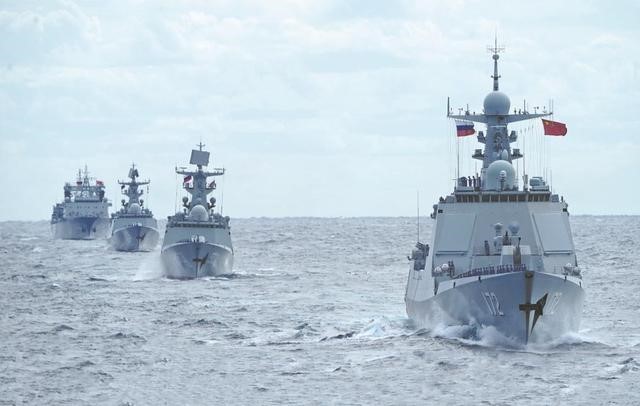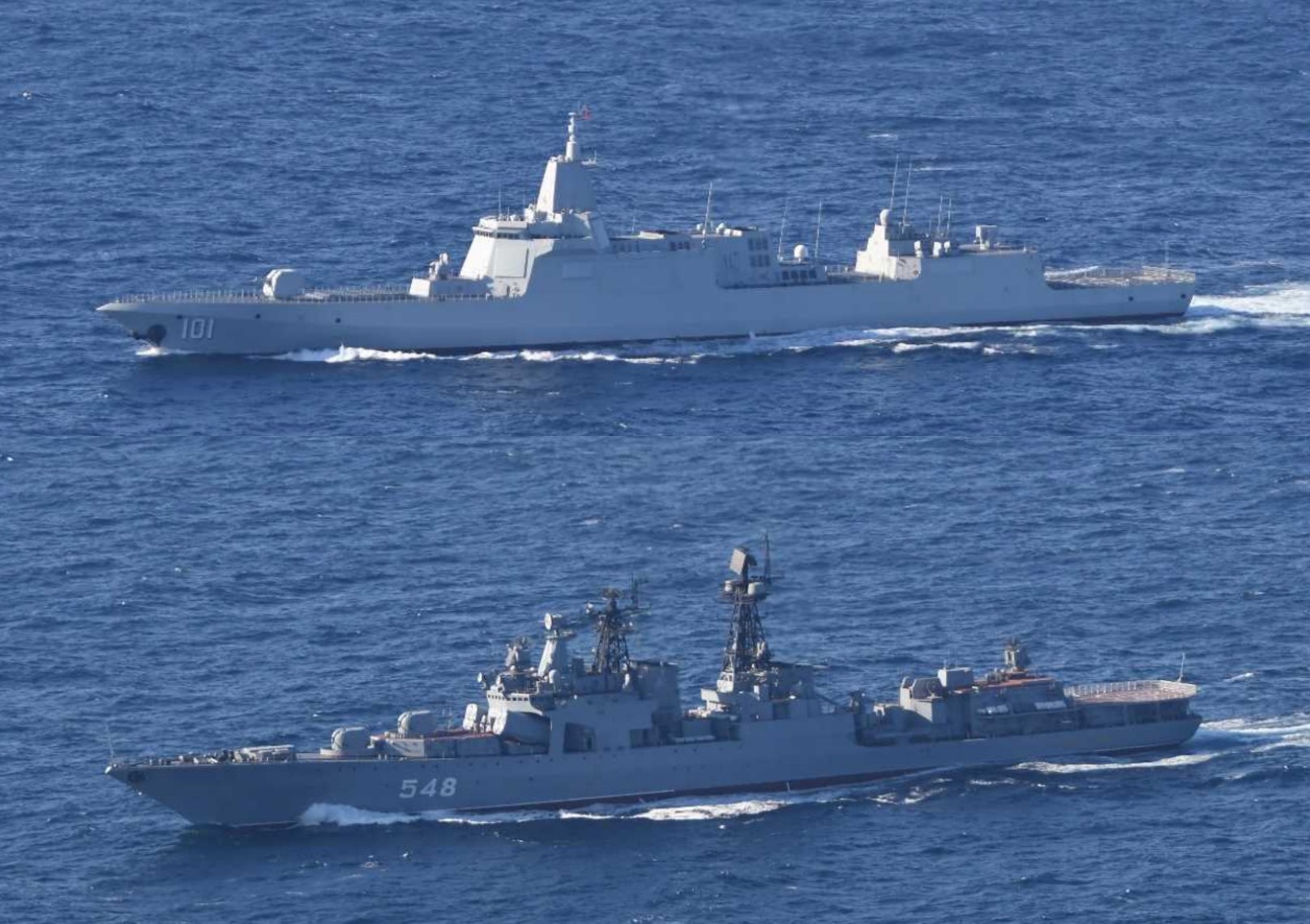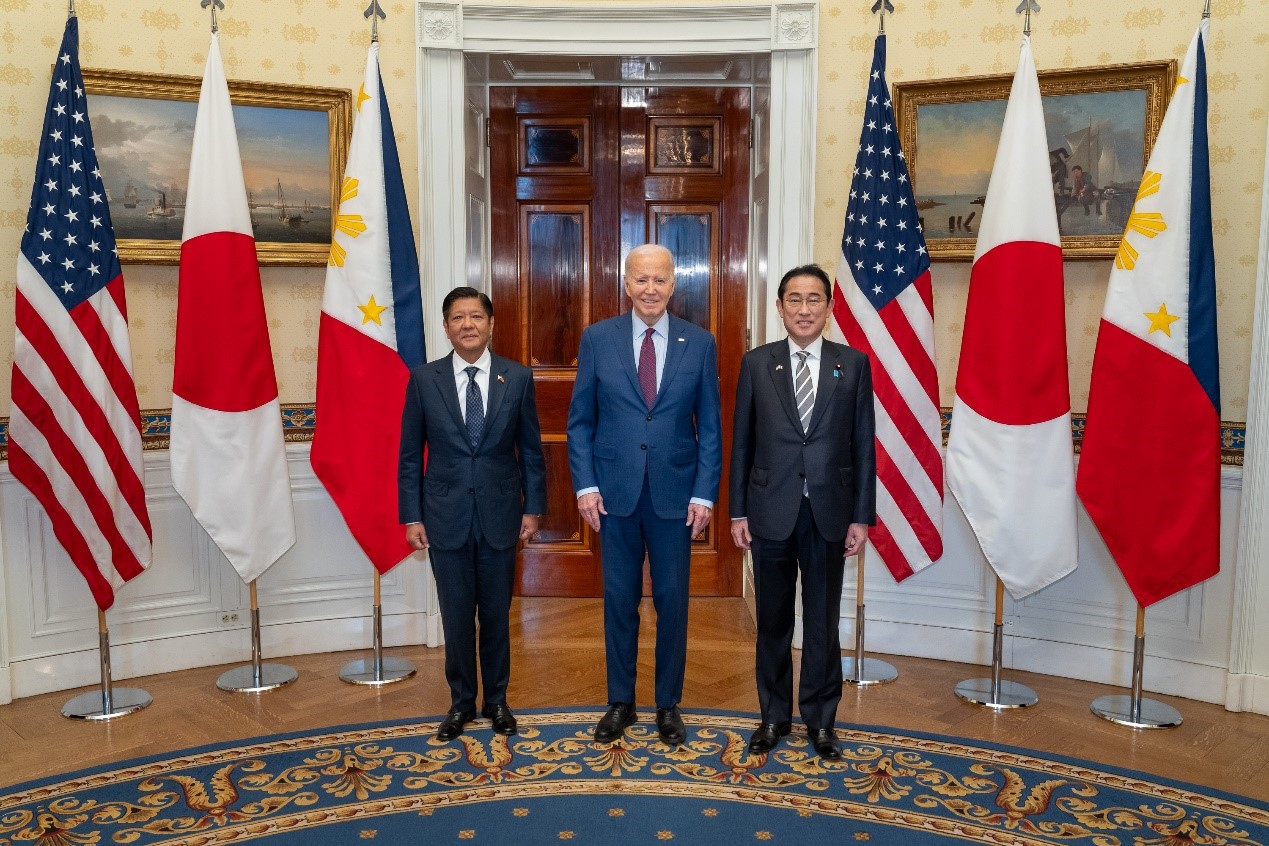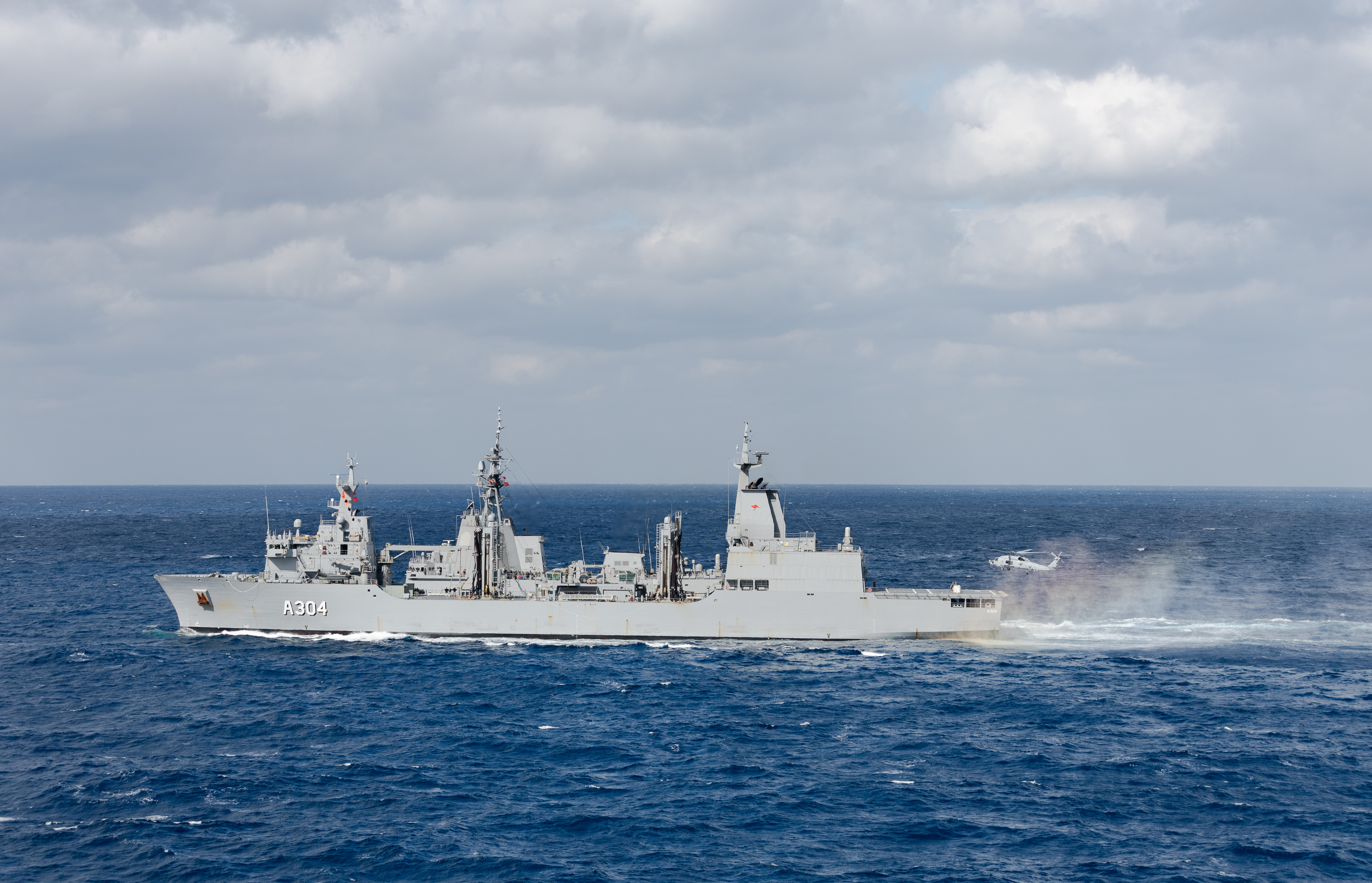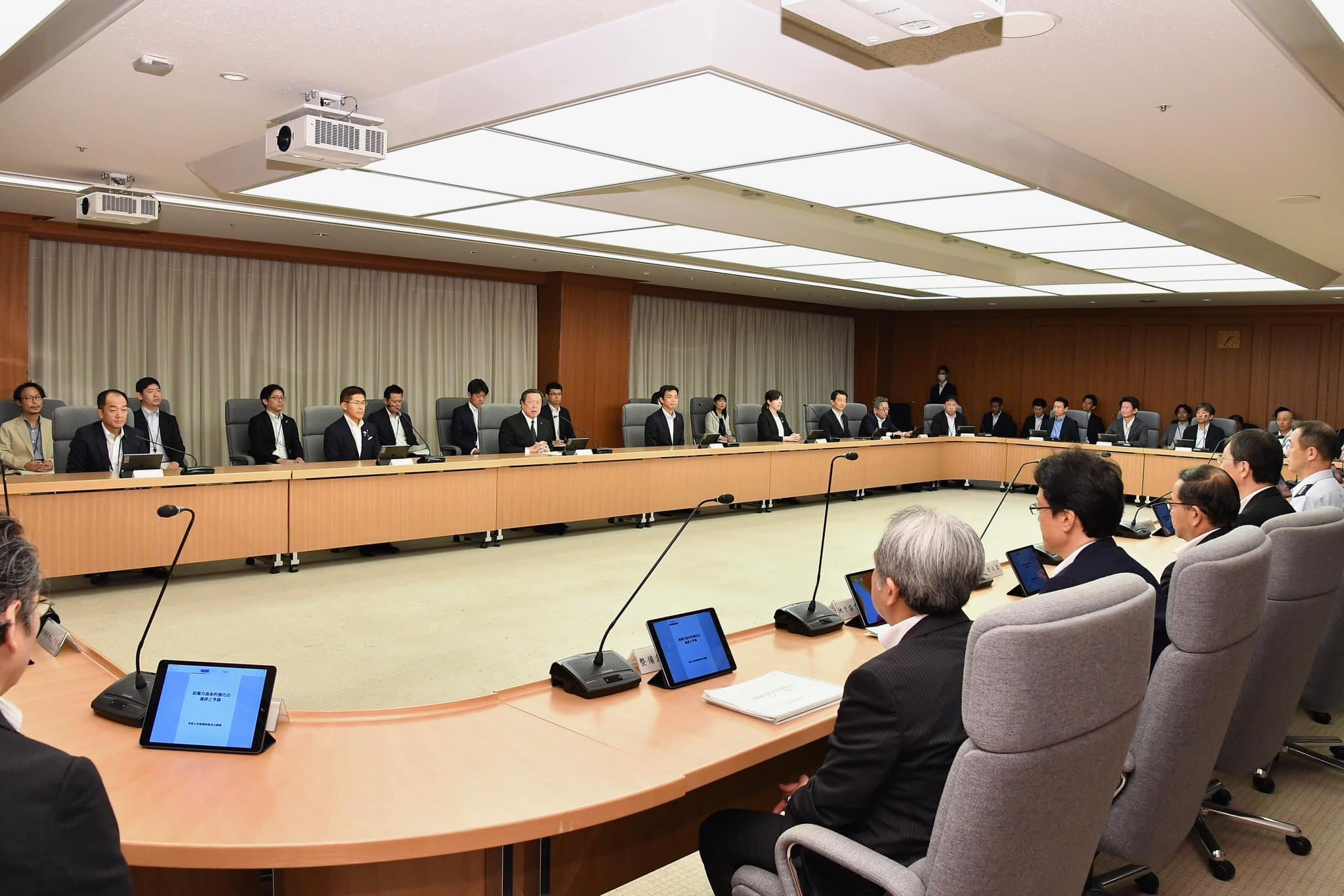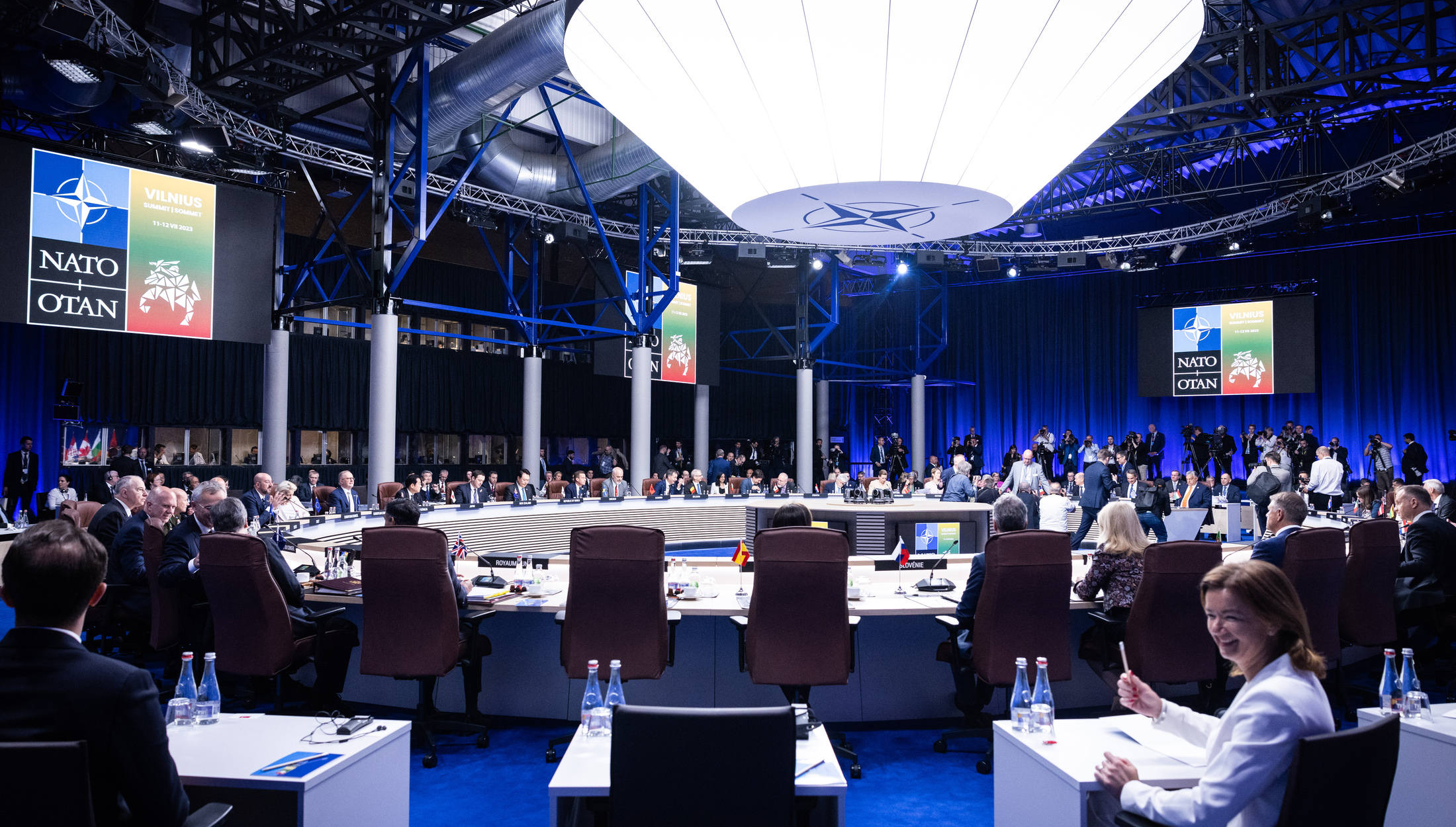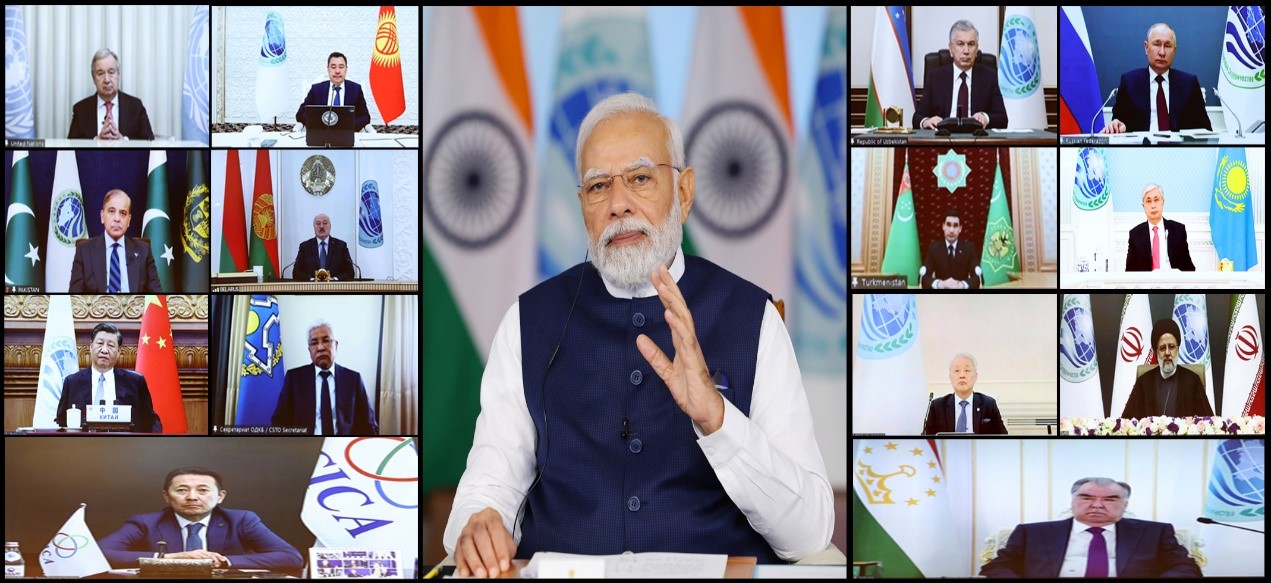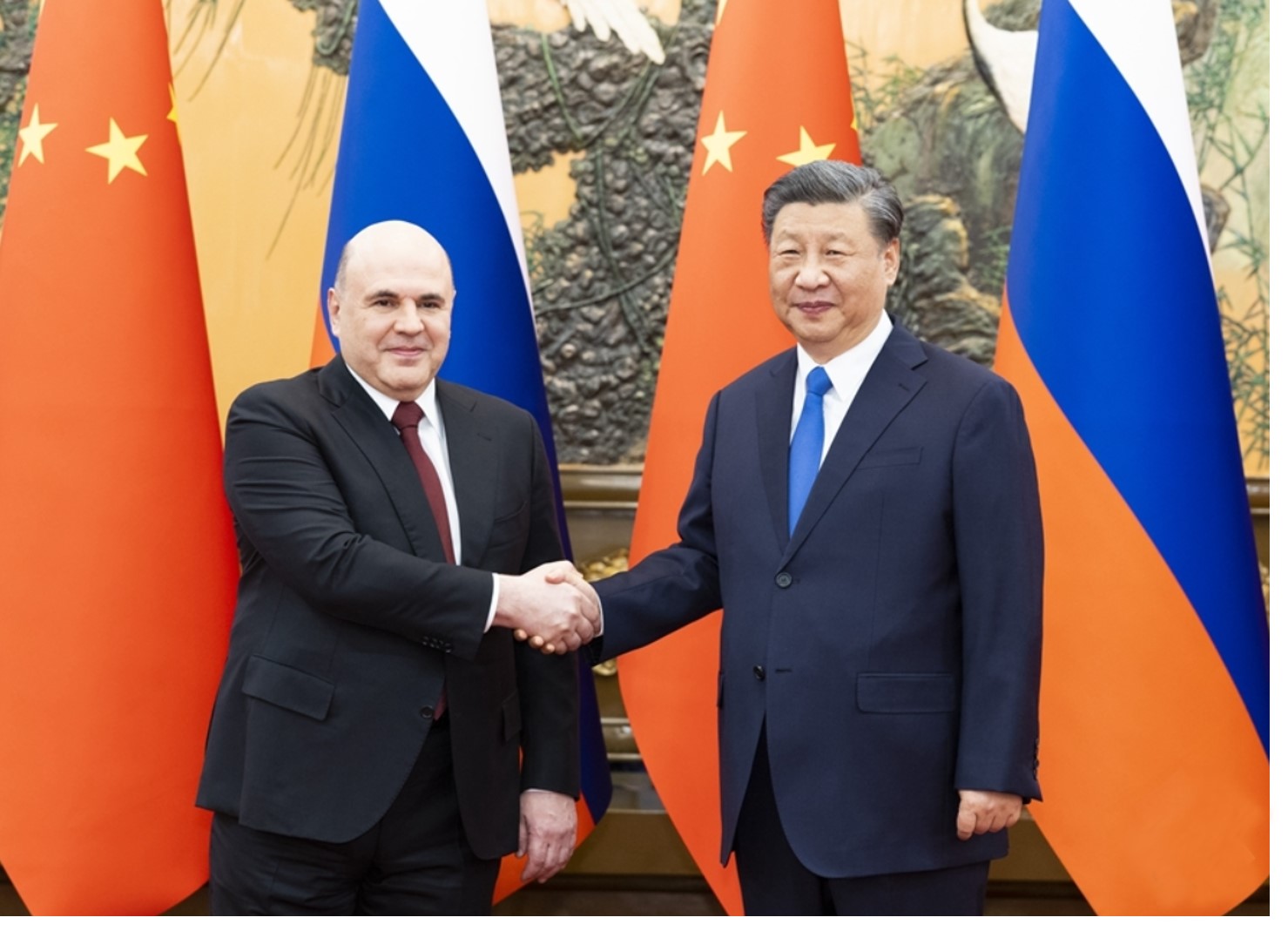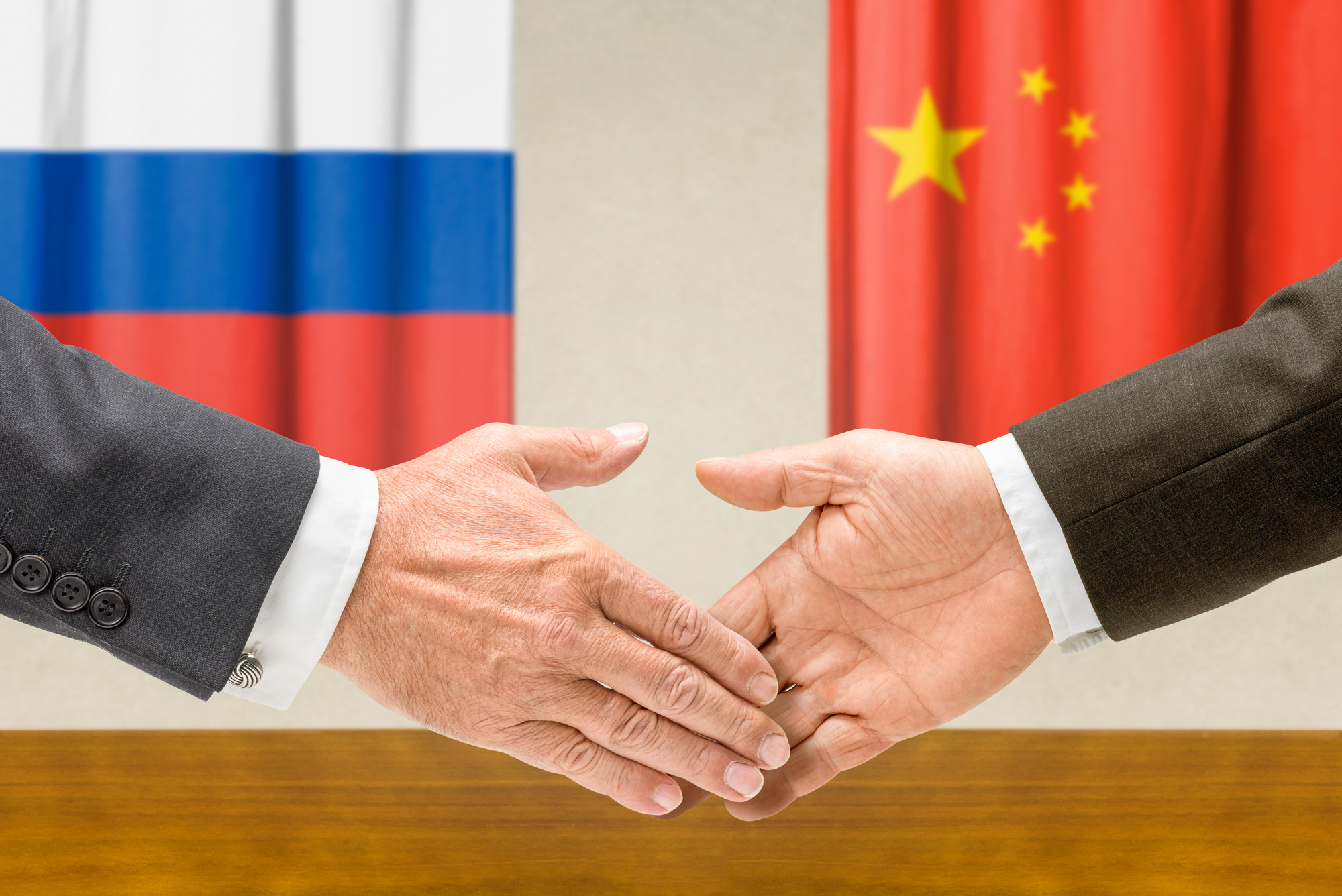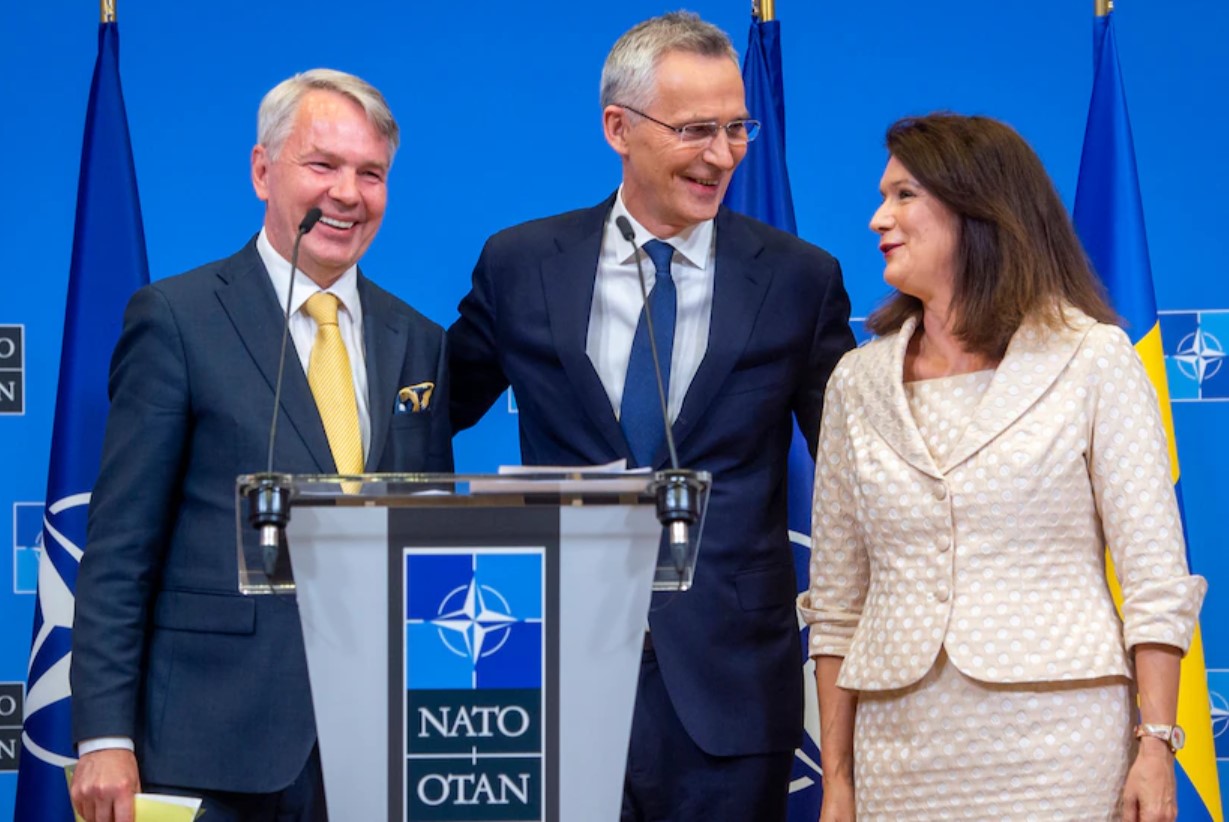In October, a group of 10 naval ships from Russia and China made an unprecedented move by sailing through the narrow Tsugaru Strait. The strengthening Beijing-Moscow partnership highlights the importance of the U.S.-Japan alliance as well as Washington’s relationship with like-minded regional partners including – but not limited to — Taiwan, South Korea and Australia. Picture source: 中國國防部,《中國國防部》,http://www.mod.gov.cn/photos/2021-11/02/content_4898206.htm
Prospects & Perspectives 2021 No. 66
Russia and China’s Strategic Alignment in the Indo-Pacific
By Jonathan Berkshire Miller
December 8, 2021
In October, a group of 10 naval ships from Russia and China made an unprecedented move by sailing through the narrow Tsugaru Strait that separates Japan’s main island of Honshu from the northern island of Hokkaido. The move startled Japan, which is closely monitoring a noticeable uptick in military-military cooperation between Beijing and Moscow ahead of its plans to revamp its National Security Strategy and National Defense Program Guidelines next year.
Indeed, the naval exercises marked the first time that China and Russia embarked on join patrols through the Strait – which is strategic also due its gateway between the Sea of Japan and the Western Pacific. While passage of the Strait did not infringe on Japan’s territorial waters or break international maritime laws, it raised eyebrows in Tokyo, which has territorial disputes with both Russia and China and its wary of their increased military coordination.
The exercises in the Tsugaru Strait must be looked at in the broader context of China’s effort to resituate its strategic position vis-à-vis Japan and the U.S. alliance network in the region. This should not be seen as isolated one-off, or a tit-for-tat because of U.S. naval exercises in the region (including a joint patrol through the Taiwan Strait with the Royal Canadian Navy earlier this year). In addition to this recent sailing, the Chinese People Liberation Army Navy (PLAN) has now repeatedly sailed through the strategic Miyako Strait that cuts through Japan’s Ryuku island chains and provides access from the East China Sea to the Pacific.
Beyond the Tsugaru Strait
The symbolism should not be lost on Tokyo, Washington, and other partners in the region. The PLAN, sometimes in coordination with Russia, is normalizing its access to the Western Pacific on one hand and its ability to encircle Japan from two different entry points: Tsugaru and Miyako. The latter movements near the Ryuku chain are particularly concerning to Taiwan which is less than 400km from the island.
So, what are we to make of Russia’s role and are we likely to see more of these exercises in future? While the relationship between China and Russia continues to be complex, and indeed challenged in some respects, there can be no doubt that their growing strategic alignment is not contrived or purely ad hoc. The growing engagement in the security-defense realm, especially in the Indo-Pacific, is real and is centered on a common goal: to weaken the presence of the United States in the region and that of its alliance network. As a result, these types of exercises are likely to continue and even expand in scope and frequency in the coming years.
Moscow and Beijing are not new to joining up militarily to send signals to the U.S. and its allies. Two incidents are especially revealing of this point to Japan. First, in June 2016, Russian naval vessels sparked alarm in Tokyo by entering the contiguous zone waters around the Senkaku (Diaoyutai) islands, which are administered by Japan but also claimed by China and Taiwan. The more alarming element was what followed. The PLAN, which was operating in tandem with the Russian navy at the time, proceeded to follow the Russians through the contiguous zone – which represented the first time the zone had been intruded on by a Chinese military vessel.
While the threshold-breaking move, clearly done in collusion, is meant to exploit gray-zone vulnerabilities around the Senkaku, its lesson is not limited to Japan and similar such moves are happening more broadly through the region – such as the Taiwan Strait and the South China Sea.
Indeed, another example of this collusion happened in 2019, when Moscow and Beijing conducted joint air exercises of their long-range nuclear capable bombers in the Sea of Japan. On this occasion, Russian planes intruded over the Air Defense Identification Zones of Japan and Korea. The exercises raised the ire of both Japan and South Korea through an overflight of the disputed Liancourt Rocks (administered by South Korea but also claimed by Japan). Seoul’s response was to scramble its air force and send warning shots. Tokyo, at the time, protested the Korean maneuvers, as they occurred over islands that Japan considers its sovereign territory.
The move again seems to be contrived rather than accidental. Both Moscow and Beijing appeared to see the opportunity as a fertile to drive a wedge between Japan and South Korea – two key U.S. allies – who have been plagued by historical disputes for years.
Broader and Sustained Alignment
Why are these incidents important? These exercises are illustrative of a larger trend and growing convergence between China and Russia in the Indo-Pacific. This comes amid the backdrop of both Beijing and Moscow suffering from deep and systemic strains in their relations with the United States and European allies (in addition to allies and partners in the Indo-Pacific). Magnifying concerns for both in the region was the US decision in 2019 to withdraw from the Intermediate-Range Nuclear Forces (INF) treaty after years of Russian cheating on the pact. The US Defense Department also raised concerns in Moscow and Beijing by indicating its interest to look at options regarding deploying such capabilities to the theatre in the coming years.
Russia and China still have several differences of opinion, but primarily this collaboration is premised on one common shared goal, be it in Afghanistan, the Indo-Pacific or Europe: weakening of the U.S. alliance system and its reputational standing. The strengthening Beijing-Moscow partnership highlights the importance of the U.S.-Japan alliance as well as Washington’s relationship with like-minded regional partners including – but not limited to — Taiwan, South Korea and Australia. The potential challenge posed by Sino-Russian convergence also underscores the urgency of enhancing cooperation between US allies and partners in the region – including Taiwan. These incidents will become more and more common in the coming months and it will be critical for allies and partners to discuss areas to cooperate and show their united resolve.
(J. Berkshire Miller is a senior fellow at the Japan Institute of International Affairs. He is also director and senior fellow at the Macdonald Laurier Institute.)


